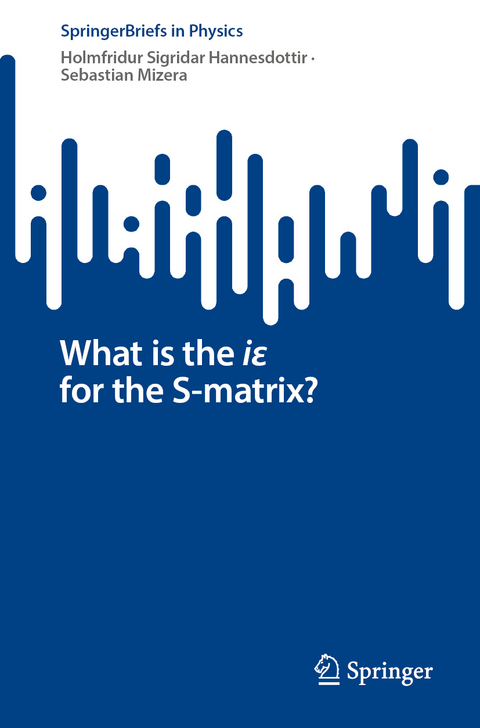
What is the iε for the S-matrix?
Springer International Publishing (Verlag)
978-3-031-18257-0 (ISBN)
This book provides a modern perspective on the analytic structure of scattering amplitudes in quantum field theory, with the goal of understanding and exploiting consequences of unitarity, causality, and locality. It focuses on the question: Can the S-matrix be complexified in a way consistent with causality? The affirmative answer has been well understood since the 1960s, in the case of 2 2 scattering of the lightest particle in theories with a mass gap at low momentum transfer, where the S-matrix is analytic everywhere except at normal-threshold branch cuts. We ask whether an analogous picture extends to realistic theories, such as the Standard Model, that include massless fields, UV/IR divergences, and unstable particles. Especially in the presence of light states running in the loops, the traditional i prescription for approaching physical regions might break down, because causality requirements for the individual Feynman diagrams can be mutually incompatible. We demonstrate that such analyticity problems are not in contradiction with unitarity. Instead, they should be thought of as finite-width effects that disappear in the idealized 2 2 scattering amplitudes with no unstable particles, but might persist at higher multiplicity. To fix these issues, we propose an i -like prescription for deforming branch cuts in the space of Mandelstam invariants without modifying the analytic properties of the physical amplitude. This procedure results in a complex strip around the real part of the kinematic space, where the S-matrix remains causal. We illustrate all the points on explicit examples, both symbolically and numerically, in addition to giving a pedagogical introduction to the analytic properties of the perturbative S-matrix from a modern point of view. To help with the investigation of related questions, we introduce a number of tools, including holomorphic cutting rules, new approaches to dispersion relations, as well as formulae for local behavior of Feynmanintegrals near branch points. This book is well suited for anyone with knowledge of quantum field theory at a graduate level who wants to become familiar with the complex-analytic structure of Feynman integrals.
lt;p>Dr Holmfridur Sigridar Hannesdottir is a member of the School of Natural Sciences at the Institute for Advanced Study in Princeton, NJ. She received a Ph.D. in physics from Harvard University, after completing a B.Sc. in physics from the University of Iceland. Her work focuses on theoretical aspects of quantum field theories, including the study of infrared divergences in gauge theories and constraining the analytic structure of Feynman integrals.
Dr. Sebastian Mizera is a long-term member at the Institute for Advanced Study in Princeton, NJ. He graduated from the University of Cambridge with a bachelor's degree in natural sciences and a master's in mathematics. He obtained a Ph.D. in theoretical physics from the Perimeter Institute and the University of Waterloo in Canada. Dr. Mizera's work focuses on the interconnections between scattering amplitudes in quantum field theories and the mathematics of algebraic geometry and topology.
1. Introduction.- 2. Unitarity implies anomalous thresholds.- 3. Primer on the analytic S-matrix 4.- Singularities as classical saddle points.- 5. Branch cut deformations.- 6. Glimpse at generalized dispersion relations.- 7. Fluctuations around classical saddle points.- 8. Conclusion Appendix. Review of Schwinger parametrization.
| Erscheinungsdatum | 04.01.2023 |
|---|---|
| Reihe/Serie | SpringerBriefs in Physics |
| Zusatzinfo | VI, 165 p. 39 illus., 37 illus. in color. |
| Verlagsort | Cham |
| Sprache | englisch |
| Maße | 155 x 235 mm |
| Gewicht | 253 g |
| Themenwelt | Mathematik / Informatik ► Mathematik ► Analysis |
| Naturwissenschaften ► Physik / Astronomie ► Atom- / Kern- / Molekularphysik | |
| Naturwissenschaften ► Physik / Astronomie ► Hochenergiephysik / Teilchenphysik | |
| Naturwissenschaften ► Physik / Astronomie ► Theoretische Physik | |
| Schlagworte | Anomalous thresholds • Feynman integrals • Holomorphic cutting rules • Landau equation • QFT and Causality • scattering matrix • Schwinger parameterization |
| ISBN-10 | 3-031-18257-X / 303118257X |
| ISBN-13 | 978-3-031-18257-0 / 9783031182570 |
| Zustand | Neuware |
| Haben Sie eine Frage zum Produkt? |
aus dem Bereich


